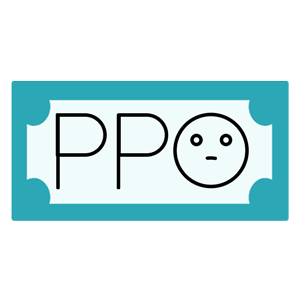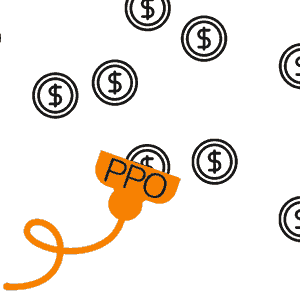Data: SCIF Pays Medicare Rates for E/M Services

Like The Zenith, California’s State Compensation Insurance Fund (SCIF) consistently pays Medicare rates to doctors for treating injured workers.
According to data from over 60,000 e-bills daisyBill doctors sent to SCIF in 2022 for Evaluation and Management (E/M) services, SCIF reimbursed doctors at essentially Medicare rates, which are far below the rates established by California’s Official Medical Fee Schedule (OMFS).
For E/M services provided to injured workers in 2022, SCIF paid:
- New Patient E/M - 76% of OMFS rates, equivalent to 102% of Medicare rates
- Established Patient E/M - 74% of OMFS rates, equivalent to 99% of Medicare rates
To receive these lowball rates for treating an injured worker covered by SCIF, a doctor and their administrative staff must expend extraordinary resources to adhere to onerous (and payer-friendly) California workers’ comp regulatory mandates — none of which are required by Medicare.
In 2022, the Division of Workers’ Compensation (DWC) set Physician Fee Schedule rates at almost 134% of Medicare rates. This means that if the Medicare reimbursement is $100, the DWC believes the physician was entitled to $134 — an additional $34 to manage the workers’ comp mandates imposed on your practice by California.
By reimbursing at Medicare rates, SCIF is paying doctors $0 to manage these mandates.
Bottom line: It is not financially feasible to treat injured workers for the same reimbursement you receive for treating Medicare patients. See for yourself by completing the simple workers’ comp Profit & Loss calculation exercise below.
Workers’ Comp Profit & Loss Calculation
Doctors, please do the arithmetic; it’s simple Profit & Loss.
Profit & Loss Calculation - For each of the eleven workers’ comp CA Administrative Requirements listed below:
- Assign an estimated practice cost for the time required (your time and your staff’s time). Make it simple $2, $5, $10 (trust us, each of the items above takes time).
- Sum the assigned practice costs.
- Subtract the sum of practice costs from the reimbursement you receive.
CA Administrative Requirements:
- Cope with the (literally) impossible task of determining the applicable Medical Provider Network (MPN), and the provider’s participation therein.
- Complete either the 3-page Form 5021 (for new patients) or the PR-2.
- For new injured worker visits, mail two copies of Form 5021 to the employer.
- If additional treatment is required, complete DWC Form RFA and fax to the claims administrator.
- Receive and process the (often lengthy and confusing) Utilization Review (UR) decisions.
- If necessary, refer the injured worker to treatment by a specialist (within the MPN).
- For payment, include all forms with the bill.
- For payment, include a narrative report of the services rendered with the bill.
- If billing electronically, send the bill with the mandated forms and reports to the correct clearinghouse.
- When the claims administrator improperly denies or adjusts the bill (a rampant practice) complete Form SBR-1 to appeal.
- When the claims administrator denies the Second Review appeal, complete Form IBR and assemble a massive, itemized IBR request packet and pay $180 for the IBR.
Every time an injured worker steps into a California practice, the provider must be prepared to assume the costs of navigating the above administrative maze. Even if you assign a cost of $1 to each of the above requirements, this exercise clearly demonstrates that providers are actually earning far less than Medicare reimbursements (trust us, many of the listed items cost your practice more than $1).
Again, Medicare imposes none of the administrative costs listed above. The steps represent eleven reasons that in 2022, California set Physician Fee Schedule reimbursement rates at roughly 134% of Medicare reimbursement rates.
SCIF 2022 E/M Payment Rates (New Patients)
All Primary Treating Physicians (PTPs) use E/M billing codes to report the level of E/M services required to treat an injured worker. Physicians also use these E/M codes when treating Medicare and group health patients.
Unfortunately (for doctors, injured workers, and employers), the data below exposes that California allowed SCIF to reduce new patient E/M reimbursements to 76% of OMFS rates, equaling 102% of Medicare.
In fact, for new patient E/M services in 2022, SCIF paid its lowest reimbursement rate for the two most-reported codes, CPT 99204 and CPT 99205:
- CPT 99204 - SCIF paid 75% OMFS (101% Medicare reimbursement)
- CPT 99205 - SCIF paid 72% OMFS (97% Medicare reimbursement)
E/M New Patient CPT |
Bill Count |
% of Total Bill Count |
Paid E/M Count |
Denied E/M Count |
Denial % |
Paid % of OMFS Rate |
Paid % of Medicare Rate |
99202 |
94 |
1% |
90 |
4 |
4% |
95% |
128% |
99203 |
1,697 |
22% |
1,531 |
137 |
8% |
88% |
118% |
99204 |
2,889 |
37% |
2,654 |
171 |
6% |
75% |
101% |
99205 |
3,026 |
39% |
2,663 |
315 |
10% |
72% |
97% |
Totals |
7,706 |
100% |
6,938 |
627 |
8% |
76% |
102% |
SCIF 2022 E/M Payment Rates (Established Patients)
Data from over 53,000 E/M reimbursements reveals SCIF reimbursed established-patient E/M codes at rates below the OMFS, and below Medicare rates. In total, SCIF’s 2022 E/M reimbursement rate for established patients was 74% of OMFS, which equaled 99% of Medicare reimbursement.
For established patient E/M services in 2022, SCIF paid its lowest reimbursements for two frequently reported codes, CPT 99214 and CPT 99215:
- CPT 99214 - SCIF paid 75% OMFS (101% Medicare reimbursement)
- CPT 99215 - SCIF paid 66% OMFS (88% Medicare reimbursement)
E/M Established Patient CPT |
Bill Count |
% of Total Bill Count |
Paid E/M Count |
Denied E/M Count |
Denal % |
Paid % of OMFS Rate |
Paid % of Medicare Rate |
99211 |
147 |
0% |
139 |
6 |
4% |
91% |
122% |
99212 |
1,190 |
2% |
1,098 |
85 |
7% |
86% |
115% |
99213 |
10,710 |
20% |
9,978 |
638 |
6% |
80% |
108% |
99214 |
32,481 |
61% |
29,653 |
2,593 |
8% |
75% |
101% |
99215 |
8,538 |
16% |
8,123 |
355 |
4% |
66% |
88% |
Totals |
53,066 |
100% |
48,991 |
3,677 |
7% |
74% |
99% |
The PPO Trap: How SCIF Pays Medicare Rates for Workers’ Comp.
How is SCIF able to pay these amounts for treating injured workers? The same way Zenith does: the Anthem Blue Cross PPO. SCIF demands that providers participate in PPOs, and therefore accept PPO reimbursement discounts, under threat of being excluded from SCIF’s MPN.
It’s another “pay-to-treat” arrangement.
In the email below, SCIF states flatly that refusal to participate in the Anthem PPO means exclusion from the SCIF MPN.
PPO Rates: A Terrible Deal for Providers
To understand just how unsustainable it is for claims administrators to pay Medicare rates (or below) for treating injured workers, we again present the administrative steps involved in new patient E/M services for workers’ comp.
- Confirm provider participation in any applicable Medical Provider Network (MPN) — an often difficult or impossible task given the lack of any comprehensive database on employer MPNs and provider participation.
- Complete the 3-page Form 5021 (Doctor’s First Report of Injury), shown below.
- MAIL two copies of Form 5021 to the employer or insurer within 5 days of treating the injured worker
- If additional treatment is required, complete DWC Form RFA (below)
- Fax Form RFA (along with Form 5021) to the claims administrator
-
Process the (often absurd, lengthy, convoluted) Utilization Review (UR) decision sent by the claims administrator in response to the RFA (see the absurd, lengthy, convoluted example UR decision from SCIF below)
- Schedule the injured worker for authorized treatment
- If necessary, refer the worker for additional treatment by a specialist — who must also be a member of any applicable MPN (good luck figuring that out).
- Include Form 5021 with the bill, along with a narrative description of the E/M services provided.
The above does not include the arduous process of submitting appeals to battle constant improper payment reductions and denials, another source of practice expense. Once again for the cheap seats, this is the reality of workers’ comp in California.
- The state establishes fee schedule rates considered commensurate with the time, effort, and expenses necessary to treat injured workers.
- Claims administrators use MPNs to rope providers into PPOs, imposing steep discounts on the fee schedule rates.
- Providers avoid treating injured workers.
- Injured workers are left in the cold.
- (Injured workers seek assistance from an applicant attorney.)
As long as claims administrators are allowed to use the PPO trap to defund doctors, workers’ comp in California will suffer.
Workers’ comp can work for providers. daisyBill software, data, and expertise make billing easier, faster, and less costly. Request a complimentary demonstration below.
REQUEST DEMO
DaisyBill provides content as an insightful service to its readers and clients. It does not offer legal advice and cannot guarantee the accuracy or suitability of its content for a particular purpose.





.gif)